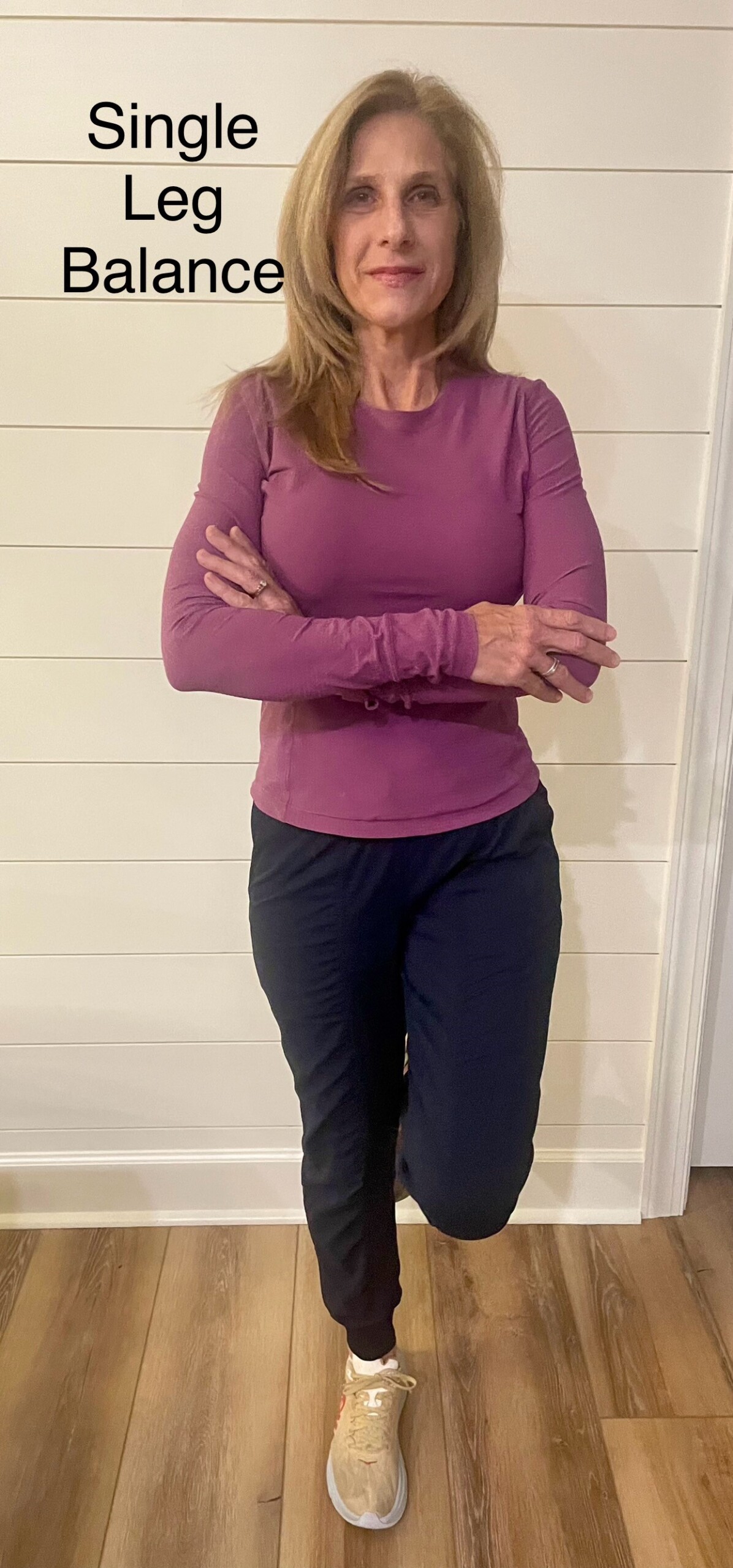Balance is more than your ability to remain upright and evenly distribute your weight as you move steadily; it is an anchor for your well-being and is often taken for granted until it becomes compromised.
Whether navigating uneven terrain during a beach walk or participating in sports, a strong sense of balance helps you react quickly and maintain stability, reducing the risk of slips, trips, and falls. To fully understand balance, we will examine the combination of sensorimotor controls that our body uses for balance, along with symptoms and situations of imbalance that may require a physician’s care and possibly physical therapy.
We encourage you to access and improve your balance with our simple tests of valuable at-home exercises and learn why functional fitness is an excellent option for maintaining and enhancing stability.
A doctor’s evaluation is recommended for more complex imbalance symptoms or situations. If you experience unsteadiness, dizziness, lightheadedness, blurred vision, falling, disorientation, room spinning, or feeling like you’re moving when stationary, please refrain from self-assessment and at-home exercises and contact Symbios Health.
Testing Your Balance
Although a tightrope or balance beam are top-of-the-line balance indicators, these basic assessments can offer a snapshot of your current balance. You can self-assess your balance and highlight areas for improvement with a few simple tests:
Note: We advise testing with a trustworthy friend, standing near a stable item to catch yourself if you become unbalanced, and connecting with your doctor to evaluate your postural stability concerns.
- Romberg Test: Stand with your arms crossed in front of you or straight at your sides, both feet touching and facing forward. Repeat with eyes closed. Visit your physician or ask a friend to observe your stance for one minute and note any movements, such as swaying.
- Single-Legged Stance Test (SLST): Stand on one leg and see how long you can maintain your balance. Try to hold for one minute; repeat on the opposite leg for three sets.
- Advanced Variation of SLST: Stand on one leg with your eyes closed for 30 seconds or as long as possible with supervision.
- Straight Line: Walk heel to toe in a straight line, mimicking a sobriety test. You can add a challenge by walking on a 2×4 plank or similar sturdy item.
Understanding Sensorimotor Controls that Affect Balance
Every movement, touch, or vibration detected by your body sends impulses to your brain through your dorsal column, the pathway of your central nervous system (brain and spinal cord), from sensory receptors in your skin, joints, and muscles that detect motion and position. Proprioception occurs as your brain combines sensations with data from other systems, such as the vestibular system in your inner ear and eyesight, to interpret the position of your body in relation to the area around you. Your doctor can evaluate the function of your dorsal column by removing vision during the balance test.
Finding Balance through Physical Therapy
Medical treatments such as Symbios physical therapy can provide valuable assistance in regaining balance related to injury, health conditions, vision issues, certain medications, and aging. Physical therapists are trained to assess individual needs and design personalized exercise programs that target specific areas of weakness or imbalance. These programs may include a combination of strength training, flexibility exercises, and coordination drills to enhance overall stability. Additionally, physical therapists can guide proper body mechanics and offer strategies to improve balance in daily activities.
Valuable At-home Exercises to Improve Balance
Incorporate these exercises into your routine to enhance balance, stability, and overall functional fitness. As with any exercise program, listen to your body, start slowly, and progress comfortably. Consult Symbios Health or a certified fitness expert before beginning a new exercise regimen if you have any concerns or existing health conditions.
Flamingo Stance
Begin by standing on one leg with a slight bend in the knee. Lift the opposite foot off the ground, bringing the sole of your foot to the inside of your standing leg’s calf or thigh (choose a comfortable level for you). Find a focal point in front of you to help with balance. Engage your core and hold the position for 20-30 seconds before switching to the other leg. Try closing your eyes or incorporating small movements like lifting your arms to increase difficulty.

Tandem Stance with Knee Lift
Stand with your feet in a straight line, placing the heel of one foot directly in front of the toes of the other foot. Keep your gaze forward and your core engaged. Lift your back knee towards your chest while maintaining the tandem stance. Hold the lifted knee for a moment, then lower it back down. Repeat this movement for 10-15 reps on one leg before switching to the other. This exercise challenges your balance and works on hip stability.

Single-Leg Balance with Eyes Closed
Stand on one leg with a slight bend in the knee. Once you feel stable, close your eyes, and focus on maintaining your balance. Engage your core and keep your hips level. Hold the position for 20-30 seconds before switching to the other leg. This exercise challenges proprioception (awareness of your body in space) and strengthens the stabilizing muscles in your ankles, knees, and hips.

Sit-to-Stand on One-Leg
Start by sitting on a sturdy chair with your feet flat on the floor. Transfer your weight onto one leg and lift the opposite foot slightly off the ground. Stand up from the chair using only the standing leg. Once standing, lower yourself back down to the seated position in a controlled manner. Repeat this movement for 10-12 reps on one leg before switching to the other. This exercise improves balance and strengthens your hips, thighs, and lower back muscles.

How Functional Fitness Improves Balance
Functional fitness focuses on exercises that mimic real-life movements, enhancing your ability to perform daily activities efficiently and avoid injuries. This approach directly contributes to improving balance by engaging multiple muscle groups simultaneously. Incorporating squats, lunges, and stability ball routines into your fitness regimen can help strengthen the core and lower body and stabilize muscles, which are crucial for maintaining balance. SymbiosFIT’s expert training staff welcomes the opportunity to work with you to improve technique and ensure proper form during workouts for faster results.
Symbios encourages you to prioritize balance in your fitness journey and enjoy the benefits of a more stable and injury-resistant lifestyle. Regular self-assessment, functional exercises, and, when needed, the expertise of physical therapists can all play pivotal roles in ensuring that your balance remains a strong foundation for overall well-being.

